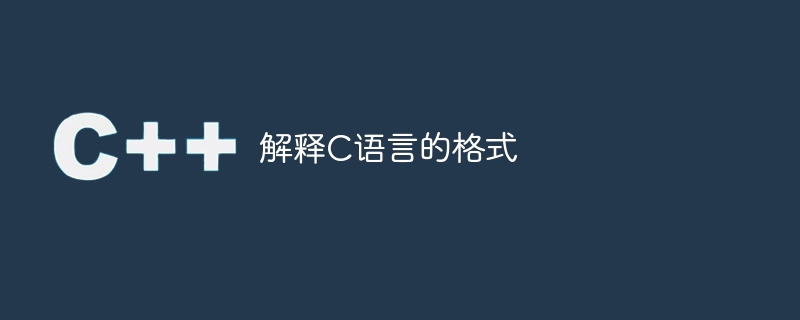Home >Backend Development >C++ >Explain the format of C language
Explain the format of C language
- WBOYWBOYWBOYWBOYWBOYWBOYWBOYWBOYWBOYWBOYWBOYWBOYWBforward
- 2023-09-06 20:01:071375browse

C programming is a general-purpose, procedural, and imperative computer programming language. In C language, we see that the
- statement ends with a semicolon.
- C case sensitive
- Indentation is ignored by the compiler.
- Strings are placed in double quotes.
- Library functions are in lowercase.
- Line breaks are processed by >
Format of C language
The format of C programming language is explained as follows-
Semicolon
Semicolon is very important in C language.
It tells the compiler where one statement ends and the next statement begins.
If we fail to place a semicolon after each statement, you will receive a compilation error.
Case Sensitive
C is a case-sensitive language. Although int compiles, "Int", "INT" or any other variant does not work in C.
All C keywords are lowercase.
Comments are not required
Although comments are not important, it is a good practice to add comments at the beginning of a program that indicate the purpose of the program, such as the author and the person who wrote it date.
Sample program
The following is a C program that uses the C format method to calculate the circumference of a circle -
The formula for the circumference of a circle = 2*PI*R. p>
Among them, R is the radius of the circle, PI is a constant, and the value is PI3.415.
Example
#include<stdio.h> //library function are lower case
#include<conio.h>
#define PI 3.1415
main ( ){
float c, r; //statements are terminated with semicolon
printf ("enter radius of circle"); //strings are placed in double
quotes
scanf ("%f", &r);
c = 2 * PI * r;
printf ("Circumference = %f", c);
getch ( );
}Output
When the above program is executed, the following results are produced -
Enter radius of circle 1 Circumference=6.2830
The above is the detailed content of Explain the format of C language. For more information, please follow other related articles on the PHP Chinese website!

